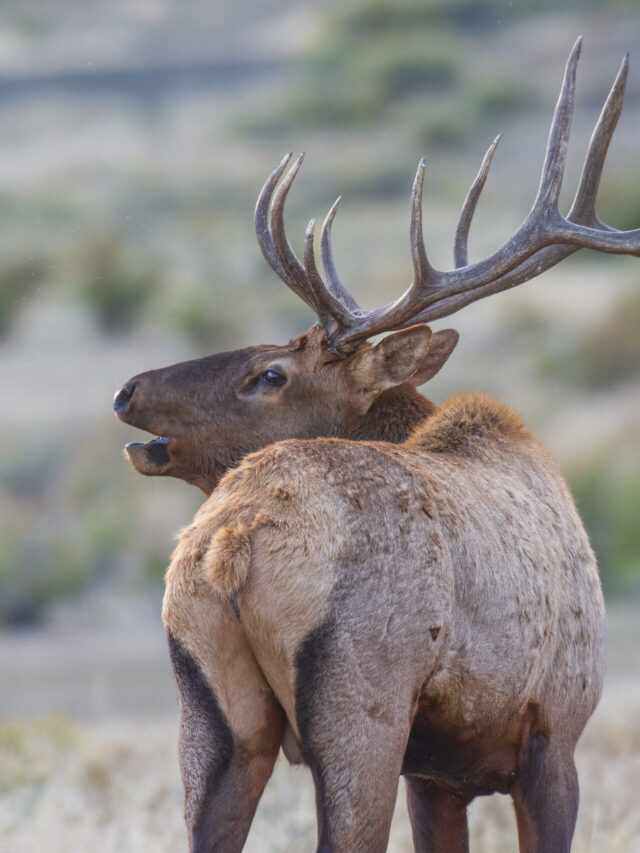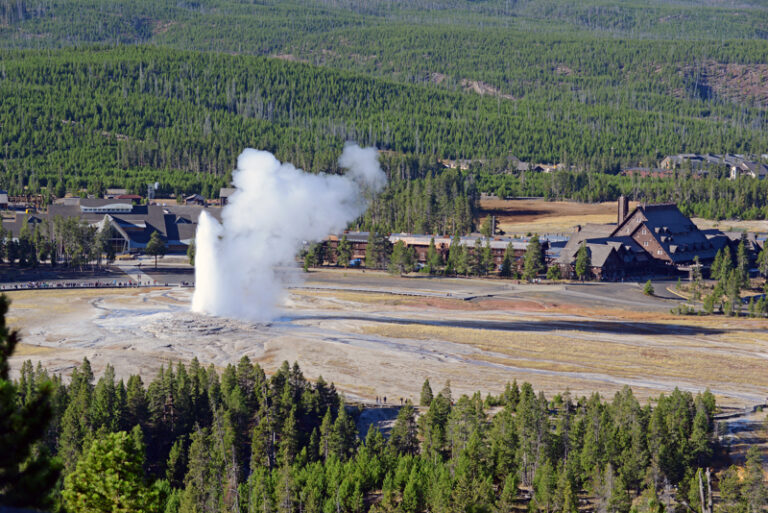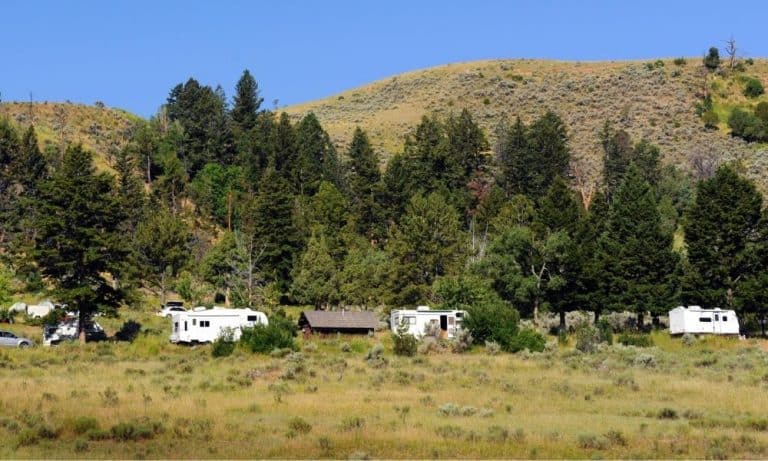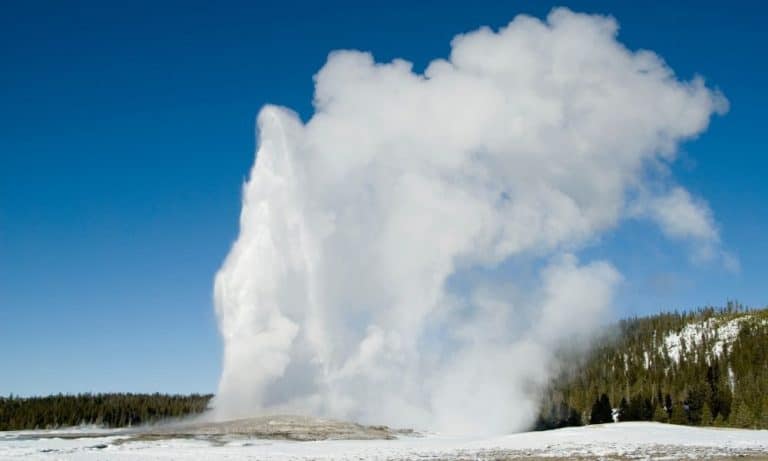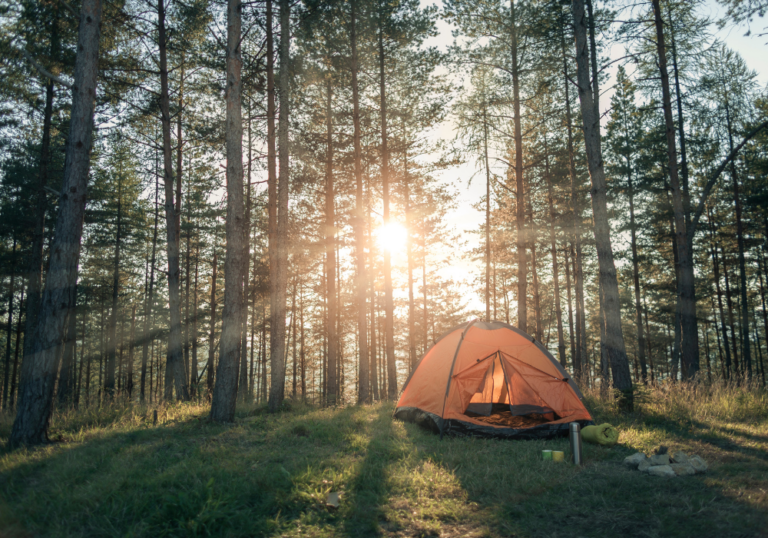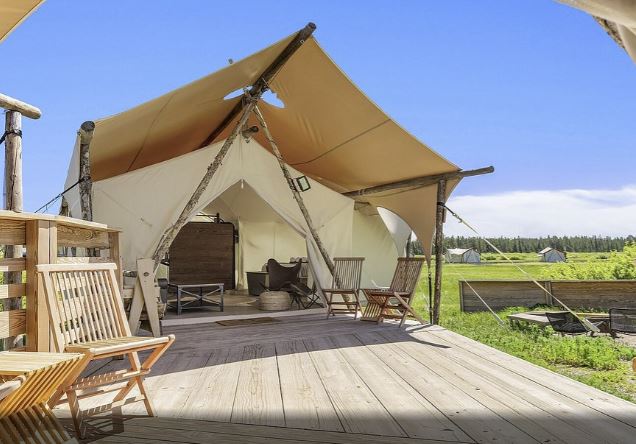Yellowstone National Park Activities
Here’s a list of our favorite Yellowstone National Park activities plus travel tips for exploring this stunning park! Use this Yellowstone National Park travel guide to plan your trip: weather, things to do, what to pack, where to stay and more!
Yellowstone National Park is a breathtaking destination brimming with unique activities for every kind of adventurer. Nature enthusiasts can revel in watching wildlife in Lamar Valley, viewing famous geysers like Old Faithful, or exploring the vivid colors of the Grand Prismatic Spring.
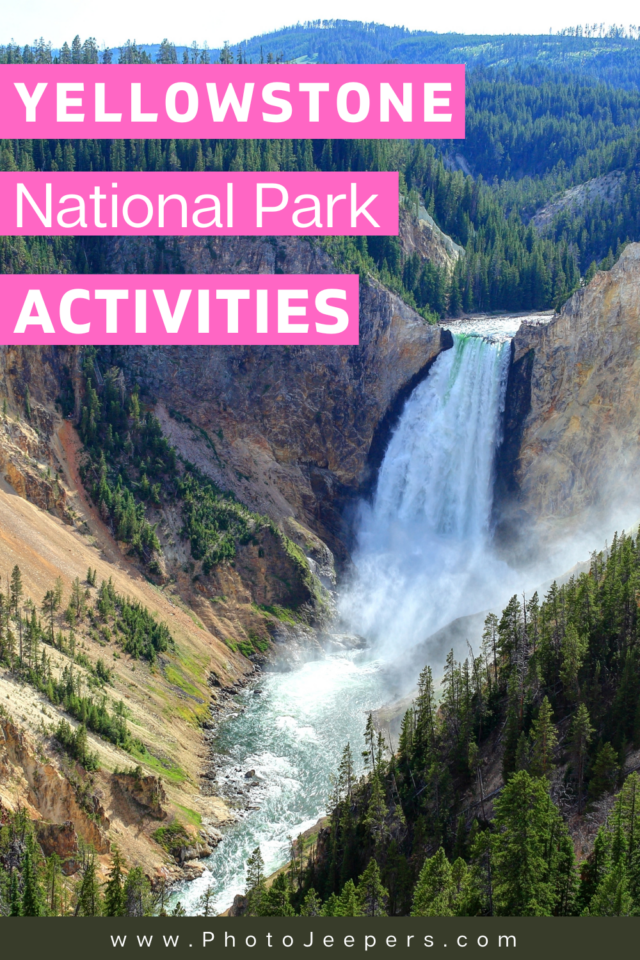
Located primarily in Wyoming, with smaller portions extending into Montana and Idaho, Yellowstone is the perfect destination for those who love the outdoors. The park presents a smorgasbord of activities to enjoy, including hiking, fishing, wildlife viewing, scenic drives, and more!
We live only hours away and visit Yellowstone often. The activities and tips we share are based on our experiences visiting the park over the years, during all four seasons.
Use our Yellowstone National Park Packing List to make sure you have the right clothing and gear for visiting any time of year! Grab your free printable packing checklist by clicking the image below!
This site contains affiliate links which means WE may receive commissions for purchases made through these links. We only provide links to products we actually use and/or wholeheartedly recommend! As an Amazon Associate, we earn from qualifying purchases. Read the full Disclosure Policy.
A Photo Tour of Yellowstone Waterfalls
Take a visual tour through Yellowstone National Park to see the stunning landscape and waterfalls you’ll find in the park!
Visiting Yellowstone National Park
The time of year you visit Yellowstone will determine the things you can do. There are important things to know about visiting Yellowstone for an enjoyable experience and activities at Yellowstone National Park during each season: services available, roads open, and things to do.
It’s important to know the Yellowstone National Park weather for the times you’ll visit. If you’re Yellowstone National Park packing list doesn’t include right clothing for the conditions, then you won’t enjoy outdoor activities!
For us, the best time to visit Yellowstone National Park is during one of the park’s shoulder seasons, which are from April through May and September through October. Not only do these months offer visitors more temperate weather, but these seasons also give guests a respite from the intense crowds that can overwhelm the park throughout July and August when most families are on summer vacation.
Additionally, you can further reduce your encounters with park crowds by visiting Yellowstone National Park during nonpeak hours, which are either before 9:00 am or after 3:00 pm.
Our favorite months for a Yellowstone vacation are May, October and during the winter. We think they are the best times to visit yellowstone for wildlife.
Check out these lists of what it’s like to visit the park during the spring, summer, fall and winter.
- Yellowstone in the Spring
- Yellowstone Summer Vacation
- Yellowstone Vacation in the Fall
- Yellowstone Winter Vacation
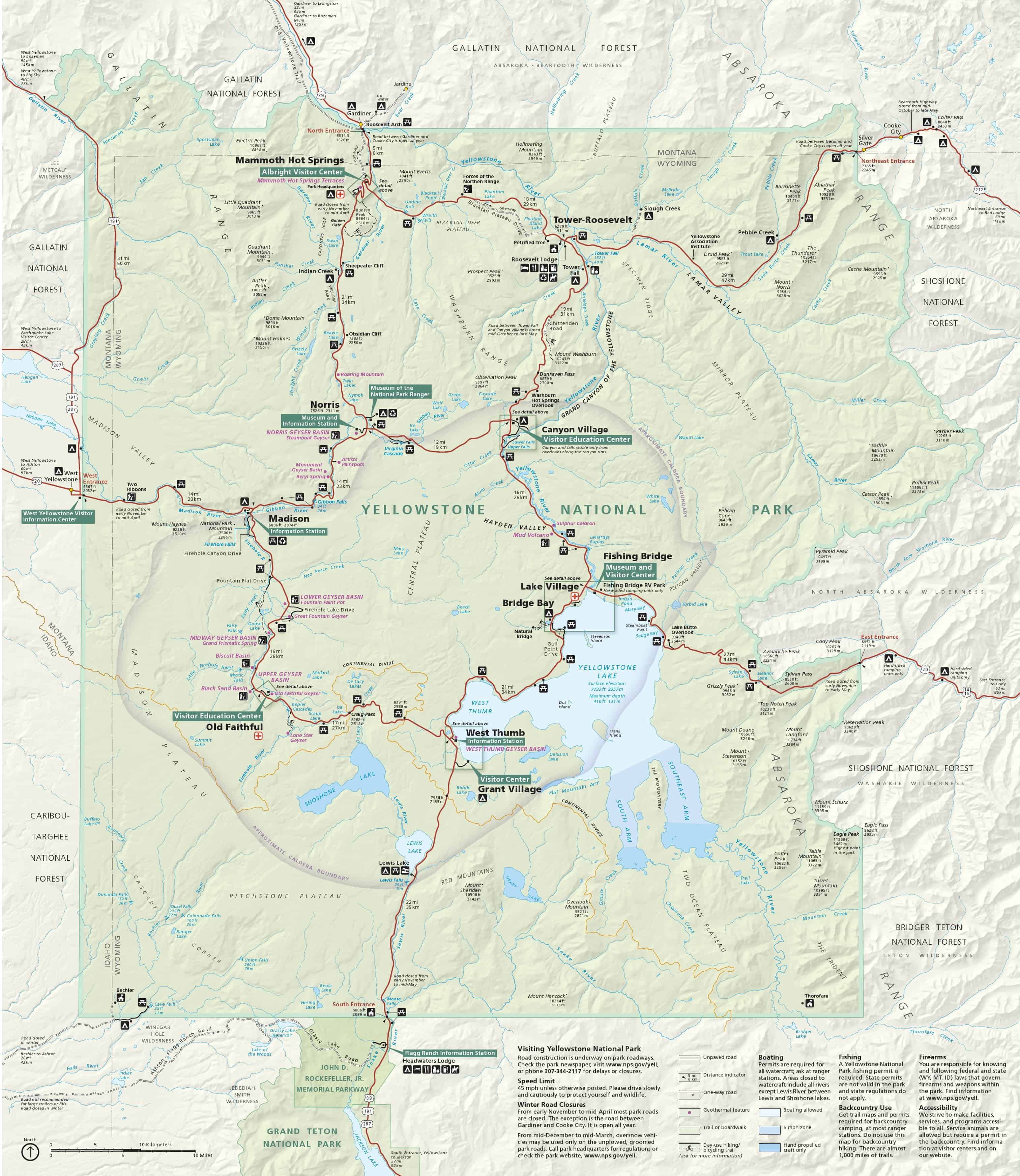
Yellowstone National Park Map
Use printable and interactive Yellowstone maps to help navigate through the park. Yellowstone covers a large area with long drive times from area to area.
Yellowstone National Park Activities in the Summer
Yellowstone is one of the most visited national parks in the United States. Summer, especially July and August are very busy times at the park, because Yellowstone top activities come to life so be patient driving the road, looking for parking and sharing the boardwalks and trails with many other visitors.
Visitor Centers in Yellowstone
We recommend visiting the various Visitor Centers in the park to get updated information on the points of interest, hiking trails, and other activities to do in each area.
- Old Faithful Visitor Education Center (open daily between April and early November)
- Canyon Visitor Education Center (open daily between May and mid-October)
- Fishing Bridge Museum and Visitor Center (open daily between late May and late September)
- Grant Village Visitor Center (open daily between late May and late September)
- Madison Information Station (open daily between late May and late September)
- Albright Visitor Center at Mammoth (open daily, year-round, between 9:00 and 5:00 pm, at Mammoth Hot Springs)
- Norris Area Museums (The Norris Geyser Basin Museum and the Museum of the National Park Ranger are open daily between late May and late September)
- West Yellowstone Visitor Information Center (open daily, year-round and located in the town of West Yellowstone)
Many of these visitor centers also contain park stores that sell a variety of different souvenirs: books, artwork, and educational materials.
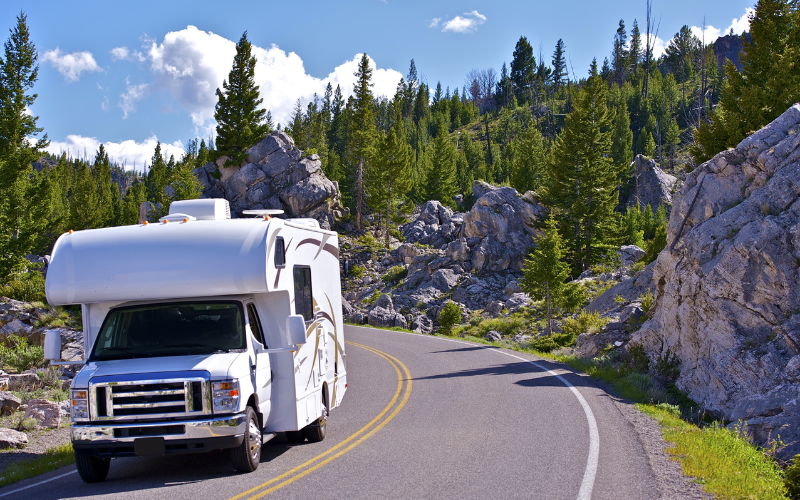
Scenic Drives in Yellowstone
Yellowstone covers over 2 million acres of land! It’s divided into 2 main sections and 9 areas. The best way to experience the park is exploring the beautiful Yellowstone scenic drives in the park and surrounding areas.
You’ll find the most crowds along the Yellowstone National Park Southern Loop. There are three entrances to access the southern loop of Yellowstone: West (West Yellowstone), South (Grand Teton), and East (Cody):
- Madison
- Old Faithful
- Lake
- West Thumb Geyser Basin
- Grant Village
- Canyon
- Norris
There are two entrances with direct access to the Yellowstone National Park Northern Loop: North (Gardiner) and Northeast (Cooke City).
There are four areas in the northern loop of Yellowstone:
- Mammoth
- Tower-Roosevelt
- Lamar Valley
- Canyon
- Norris
If you are looking to drive through Yellowstone yourself, but want to hear all the fun and educational information about this National Park, we recommend the the GyPSy App Guide. It will automatically tell you stories, tips and directions as you drive that will help enrich your Yellowstone National Park experience. There’s no need for cell service or wifi signal while touring. Tours are downloaded to your device for easy offline use.
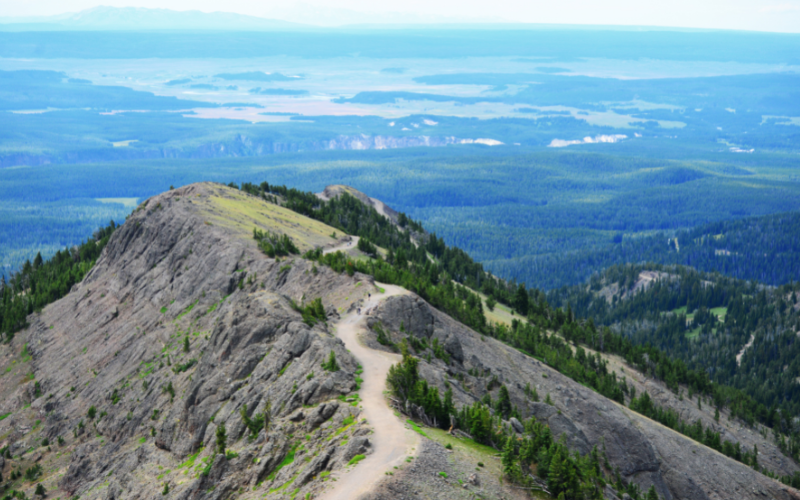
Hiking in Yellowstone
Some Yellowstone hiking trails might still be wet and muddy in early July. Here are a few tips to keep in mind when hiking at Yellowstone:
- Check with the rangers at the Visitor Center to get current trail conditions.
- Tell someone your hiking destination, route, and estimated time of return.
- What to Bring on a Day Hike: hydration pack, raincoat, warm hat, fleece jacket, insect repellent, sunscreen, bear spray, and a first aid kit.
- Stay on trails: taking shortcuts causes trail erosion and is dangerous. In hydrothermal areas, stepping on thin crust may plunge you into boiling water.
Here’s a list of easy hikes in Yellowstone National Park as well as longer day hikes in the park by region:
- Old Faithful Area Day Hikes in Yellowstone
- Canyon Area Day Hikes at Yellowstone
- Mammoth Hot Springs Area Day Hikes in Yellowstone
- Lake and Fishing Bridge Area Day Hikes in Yellowstone
- Madison Area Day Hikes in Yellowstone
- Grant and West Thumb Area Day Hikes in Yellowstone
- Tower and Northeast Area Day Hikes in Yellowstone
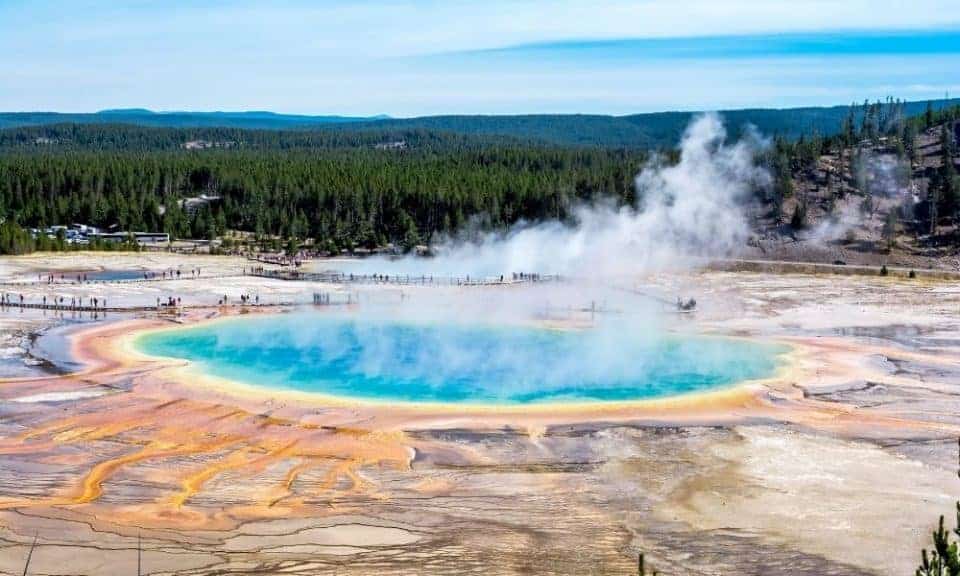
Geysers and Hot Springs in Yellowstone
There are five types of hydrothermal features you’ll see in Yellowstone: geysers, hot springs, mudpots, travertine terraces and fumaroles. Check out the NPS website for the latest geyser eruption predictions!
Here’s a list of the best places to see these wonders:
- Old Faithful, Upper and Lower Geyser Basin
- Grand Prismatic (Midway Geyser Basin)
- Norris Geyser Basin
- West Thumb Geyser Basin
- Mud Volcano
- Fountain Paint Pot
- Mammoth Hot Springs
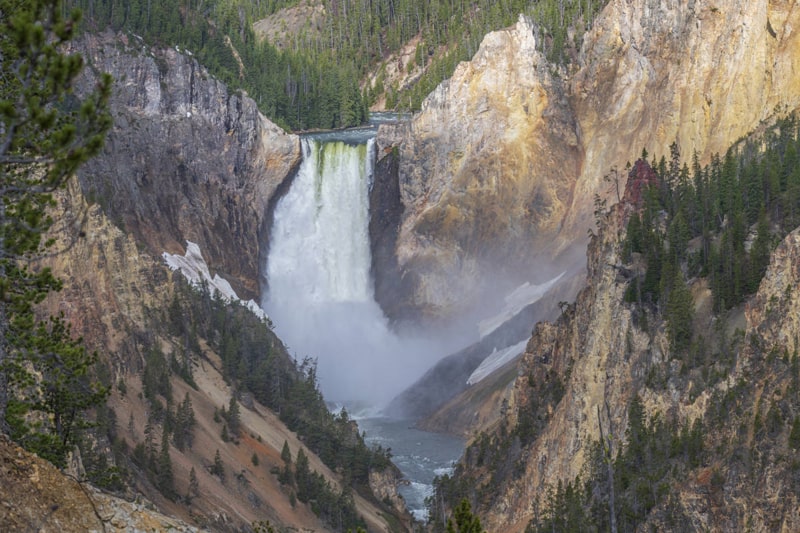
Waterfalls in Yellowstone
Most of the Yellowstone waterfalls don’t require hiking to see them. In July the water is still running high so it’s a good time to photograph waterfalls.
Here’s a list of the main waterfall attractions:
- Canyon: Lower and Upper Falls, Brink of Upper Falls
- Firehole Falls
- Gibbon Falls
- Kepler Cascades
- Lewis Falls
- Moose Falls
- Tower Fall
- Undine Falls
Wildlife at Yellowstone
Animals can be found throughout the park at any time. Check out our detailed guide for the best places to see Wildlife in Yellowstone National Park!
During each season at Yellowstone you’ll see a wide variety of birds and mammals at Yellowstone. We find May, October, and the winter are the best times to visit Yellowstone for wildlife.
In the summer be sure to drive through Lamar Valley to Cooke City and on along Beartooth Highway to look for moose, bighorn sheep, and mountain goats!
Remember the parameters to keep you and the animals safe!
- Never approach animals. The animals in Yellowstone are wild and unpredictable, no matter how calm they appear to be.
- The safest (and often best) view of wildlife is from inside a car. Always stay at least 100 yards (91 m) away from bears and wolves, and at least 25 yards (23 m) away from all other animals, including bison and elk. You may need to use a spotting scope to see wildlife in Yellowstone.
- Never feed wildlife. Animals that become dependent on human food may become aggressive toward people and have to be killed. Keep all food, garbage, or other smelly items packed away when not in use.
- Never park in the road or block traffic. Use pullouts to watch wildlife and let other cars pass. Stay with your vehicle if you encounter a wildlife jam.
Here’s a list of camera gear we recommend if you’re serious about photographing wildlife at Yellowstone.
- Best cameras for wildlife photography
- Best tripods for wildlife photography
- Best lenses for wildlife photography

Photography in Yellowstone
We recommend you have your camera ready to go because the wildlife you may see as you drive through the park won’t wait for you to find the camera in your car.
You’ll also want to photograph the geysers, hot pools, waterfalls and rivers. Here are some tips for taking pictures at Yellowstone.
- Tips for Photographing Wildlife
- How to Photograph Waterfalls and Rivers
- How to Photograph Reflections
Summer Tours at Yellowstone
You’ll find a variety of Yellowstone summer tours. When you join a tour, the expert guides share their knowledge of the park and you’ll learn amazing things from them.
- Yellowstone Lower Loop Tour
- VIP Jeep Tour from West Yellowstone
- Yellowstone Tour from Jackson, Wyoming
- Yellowstone Rafting Tours
- Yellowstone Kayak Tours
- Yellowstone and Grand Teton Wildlife Safari Tours
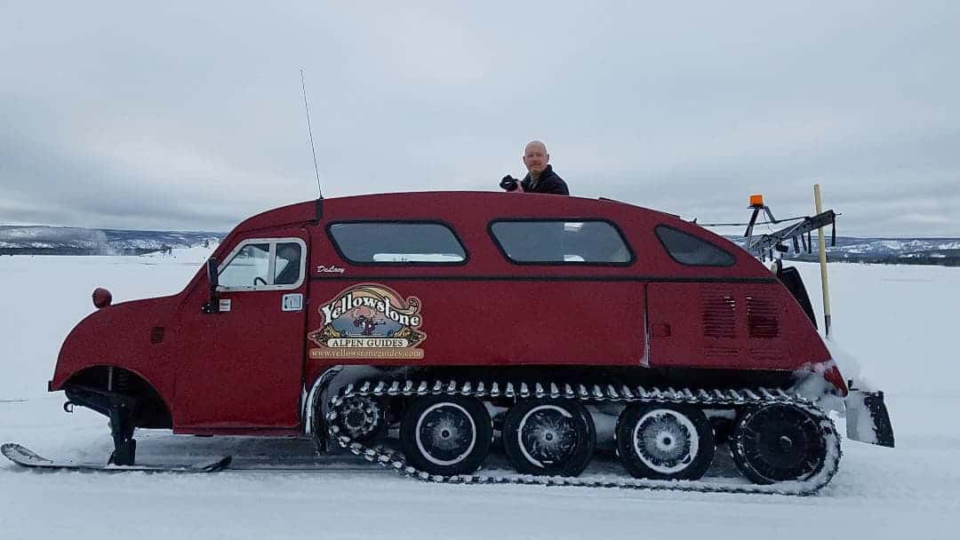
Yellowstone National Park Activities in the Winter
Winter in Yellowstone is not your ordinary vacation. In the winter the roads open to oversnow travel only via snowmobile, snowcoach, snowshoe and cross-country ski.
Here’s a list of Yellowstone winter activities you can do at the park!
Winter Tours at Yellowstone
You’ll find a variety of winter tours at Yellowstone National Park. Many of the tours will provide hotel pick up and drop-off. Most Yellowstone winter tours do NOT include gratuity for the guide.
Yellowstone National Park may require all guests to pay the entrance fee or show your National Park pass.
We enjoyed traveling along Yellowstone’s snow-covered roads in a bomardier snowcoach. There were no streams of cars, RVs or tour buses crowding the roads. If you’ve ever visited Yellowstone in the summer, you know this is a welcome change.
You’ll find Yellowstone winter tours to explore the park by snowshoes, skis, snowmobiles or snowcoaches!

Cross-country Skiing and Snowshoeing at Yellowstone
All unplowed roads and trails are open to cross-country skiing and snowshoeing. Here’s a list of Yellowstone ski and snowshoe trails by region.
Canyon Ski & Snowshoe Trails: Canyon Rim, Cascade Lake, North Rim, Old Canyon Bridge, Roller Coaster
Mammoth Hot Springs Ski & Snowshoe Trails: Bighorn Loop, Bunsen Peak, Indian Creek, Sheepeater, Snow Pass, Upper Terrace Loop
Northeast Ski & Snowshoe Trails: Bannock, Barronette, Pebble Creek
Old Faithful Ski & Snowshoe Trails: Black Sand Basin, Divide, Fairy Falls, Fern Cascades, Lone Star Geyser, Mallard Creek, Mallard Lake, Observation Point Loop, Spring Creek
Tower Ski & Snowshoe Trails: Blacktail Plateau, Chittenden Loop, Lost Lake, Tower Fall, Yancey’s Hole
West Yellowstone Ski & Snowshoe Trails: Bighorn Pass, Black Butte, Daly Creek, Fawn Pass, Gneiss Creek, Riverside, Specimen

Snowmobiling at Yellowstone
The road between Mammoth Hot Springs and the northeast entrance is the only road in the park open to regular traffic all year long. All other roads in the park close in early November to prepare for the winter season.
By mid-December when enough snow accumulates on the roads, they open to “oversnow” travel only. This means the only way to visit Old Faithful, the Grand Canyon of the Yellowstone, and other areas in the park during the winter is by guided snowmobile or snowcoach.
In addition to the tours listed above, here’s a list of more authorized tour companies for snowmobile and snowcoach tours.
- See Yellowstone Alpen Guides – we LOVE the bomardier snowcoach tours
- Backcountry Adventures
- Old Faithful Snowmobile Tours
- Scenic Safaris
- Yellowstone Expeditions
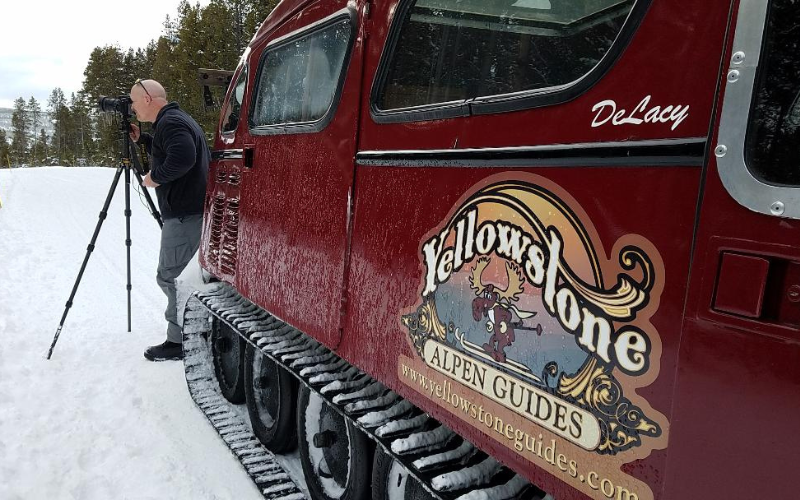
Winter Photography at Yellowstone
The winter landscape at Yellowstone is covered in a blanket of snow. There is frost on the trees and mist rising from the geysers. Be sure to pack a camera to take Yellowstone National Park winter pictures!
Due to the extreme cold, you’ll want specific WINTER camera gear to capture images of the landscape and wildlife as you drive along the road, or ski along the trails. We especially love photography gloves and rechargeable hand warmers!
We recommend you book a Yellowstone snowcoach that offers photo tours where there is flexibility to stop and take pictures at any time.
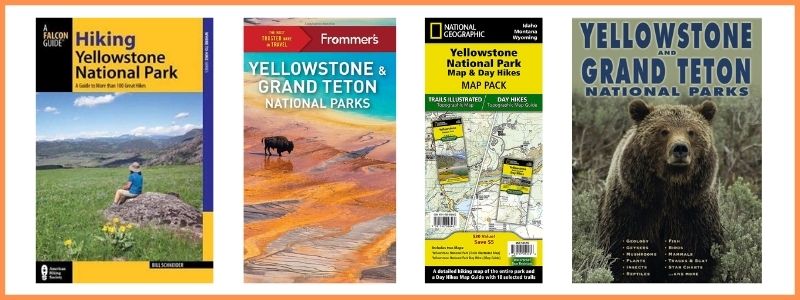
Where to Stay Near Yellowstone
- Yellowstone National Park Lodging
- Yellowstone Winter Lodging
- RV Parks Near Yellowstone National Park
- Glamping Near Yellowstone National Park
- Cabins Near Yellowstone National Park
Places to stay in West Yellowstone
- Holiday Inn, West Yellowstone
- ClubHouse Inn, West Yellowstone
- Kelly Inn, West Yellowstone
- West Yellowstone hotels!
Places to stay in Gardiner
- Yellowstone Gateway Inn, Gardiner – full kitchen and comfy bed, one of our favorite places to stay!
- Park Hotel Yellowstone, Gardiner – charming place to stay and loved by guests!
- Absaroka Lodge, Gardiner – beautiful location with river views!
- Gardiner hotels!
Places to stay in Cooke City or Silver Gate
- Sunny Log Home on the Creek, Silver Gate (VRBO) – the most AMAZING location with an awesome fireplace and comfy bed!
- High Country Motel and Cabins – local owners who love what they do, and make you feel so welcome!



